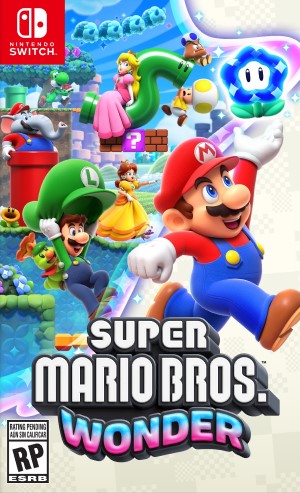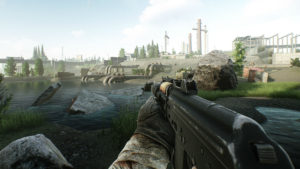
Super Mario Bros. Wonder lives up to the “Wonder” part of its name. The game is a constant, relentless, never-ending and near inexhaustible barrage of inventiveness and new ideas, with every new level introducing an entirely new mechanic (sometimes more!), and then moving on to the next thing that catches its attention. It’s the same kind of design philosophy Nintendo wields to such great effect in the 3D Mario games, where nearly every level has a signature mechanic of its own that is introduced, leveraged for some fun concepts, and then put on the back burner in favour of another fun new idea.
Super Mario Bros. Wonder does the same thing. When you start it and are confronted by the barrage of deranged lunacy of the first few levels, it almost feels like the game tipped its hand too early by putting all its best ideas upfront to make a strong first impression. Then you keep playing and realize that those ideas, which are strong enough to have entire games designed around, were the lesser ideas that Wonder felt comfortable “wasting” on introductory levels, because it has tricks waiting up its sleeve that are so much better.
Every level in Wonder is entirely different, recognizable by its own unique gimmick – or, in the exceedingly rare scenario where it reuses a gimmick from some earlier stage, from its entirely new spin on it. Every new course brings something new to the table. This is, of course, best exemplified by the eponymous “Wonder Seed” mechanic, which completely alters the stage when you find one, and changes rules dramatically. A Wonder Seed can do pretty much anything – the pipes in the stage might start moving around, animals might start stampeding, Mario himself might turn into a… sponge cake? The stage might start snowballing and destroying everything in its path, enemies might start singing in chorus, light and shadow, and weather conditions might all change, even camera perspectives can totally flip. There are nearly as many new Wonder Effect gimmicks in this game as there are stages – very few repeat – and nearly all of them are delightful, twisting and curving not just the stages they show up in, but also players’ expectations and their sense of understanding of what a 2D Mario game can do.
The Wonder Effects are enough to carry a game by themselves – honestly, most Wonder Effects are strong enough to support an entire game by themselves individually – but Mario Wonder also benefits from the strongest, sharpest stage design the 2D series has had this side of Super Mario World. Now, don’t get me wrong, I actually think the New Super Mario Bros. games get a bit of a bad reputation. They were safe and sterile, yes, but their level design was exceptionally strong, and especially by the final game in the series, the now eleven year old New Super Mario Bros. U, the games were flexing some serious level design chops. But they still felt like they were constrained by a rigid rulebook and skeleton of what a 2D Mario level should be like. Mario Wonder throws that rulebook away.
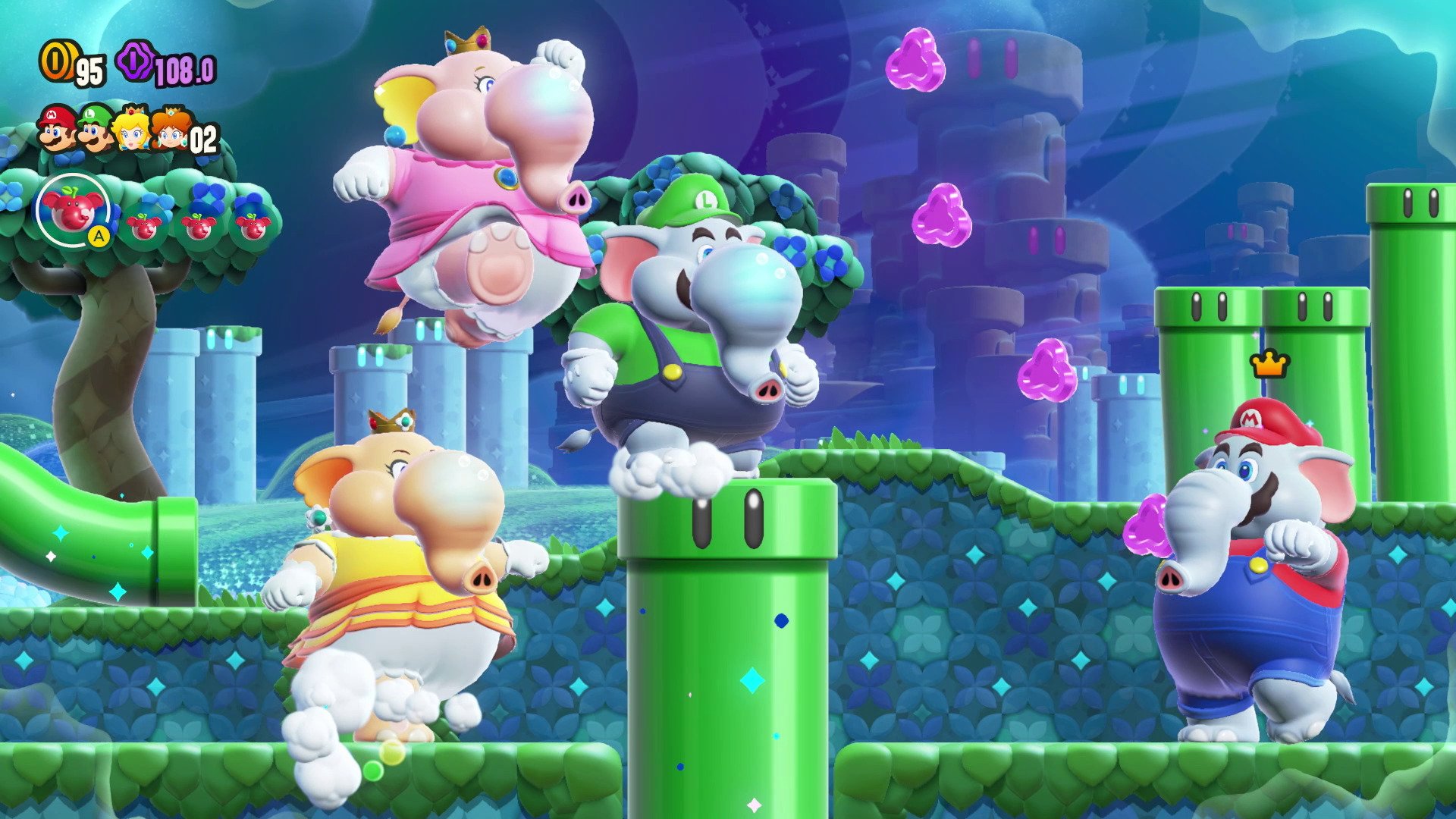
"When you start Mario Wonder and are confronted by the barrage of deranged lunacy of the first few levels, it almost feels like the game tipped its hand too early by putting all its best ideas upfront to make a strong first impression. Then you keep playing and realize that those ideas, which are strong enough to have entire games designed around, were the lesser ideas that Wonder felt comfortable “wasting” on introductory levels, because it has tricks waiting up its sleeve that are so much better."
Even without the Wonder Effects, the levels are fantastic. They are incredibly varied – there are stage specific gimmicks and enemies in nearly every single one – and they play with 2D design conventions and ethos that 2D Mario simply has never attempted before. Over the last decade and a half, 2D platformers have had a veritable renaissance and we have seen some incredible top tier 2D platformer design – just not from Mario. Where games such as Celeste and Super Meat Boy iterated on 2D platform level design by giving us things such as rhythm based platforming, or dynamic foreground and background switching, 2D Mario just gave us more 2D Mario. Until Wonder, which finally catches up to where 2D platformers as a genre have been for a decade now, and brings the franchise back to the forefront of the genre that it once used to lead.
Arguably the single biggest change to how stages are designed in Wonder comes from the dispensing of the timer. Every 2D Mario game until Wonder has a timer on each of its stages. As time has gone on, this timer has gotten exceptionally generous – a lot of stages give you well over 5-6 minutes to complete them, and some even go as high as nearly ten minutes – but a timer on a stage existing at all means that the designers have to always consider that a player may simply not be able to stop and engage with the stage too deeply. This means that branching paths, secrets, and so on, while still able to exist in 2D Mario games before, were constrained by the presence of the timer. Where they were allowed to exist, they couldn’t be too elaborate because that would run up against the timer. And when they did exist, they, again, could not be too many in volume or number because the player would risk timing out if they tried to engage with everything.
The lack of a timer in Mario Wonder has a profound impact on how the stages are designed. These stages are dense, packed with secrets and things to discover in nearly every frame and pixel. Similar to Super Mario Odyssey, Breath of the Wild, Kirby and the Forgotten Land, or Luigi’s Mansion 3, it feels like almost everything in these levels can be interacted with, and when you do interact with it, you get something in return – some secret path, a Wonder Seed, a new part of the level you had not found before, coins and collectibles, or just some great audiovisual feedback if nothing else (we’ll come back to this in a bit). You’re always finding something, and this keeps you returning to stages, trying to see what you missed, maybe coming back with a new badge to try and get to a part of the course you had been unable to get to the first time around.
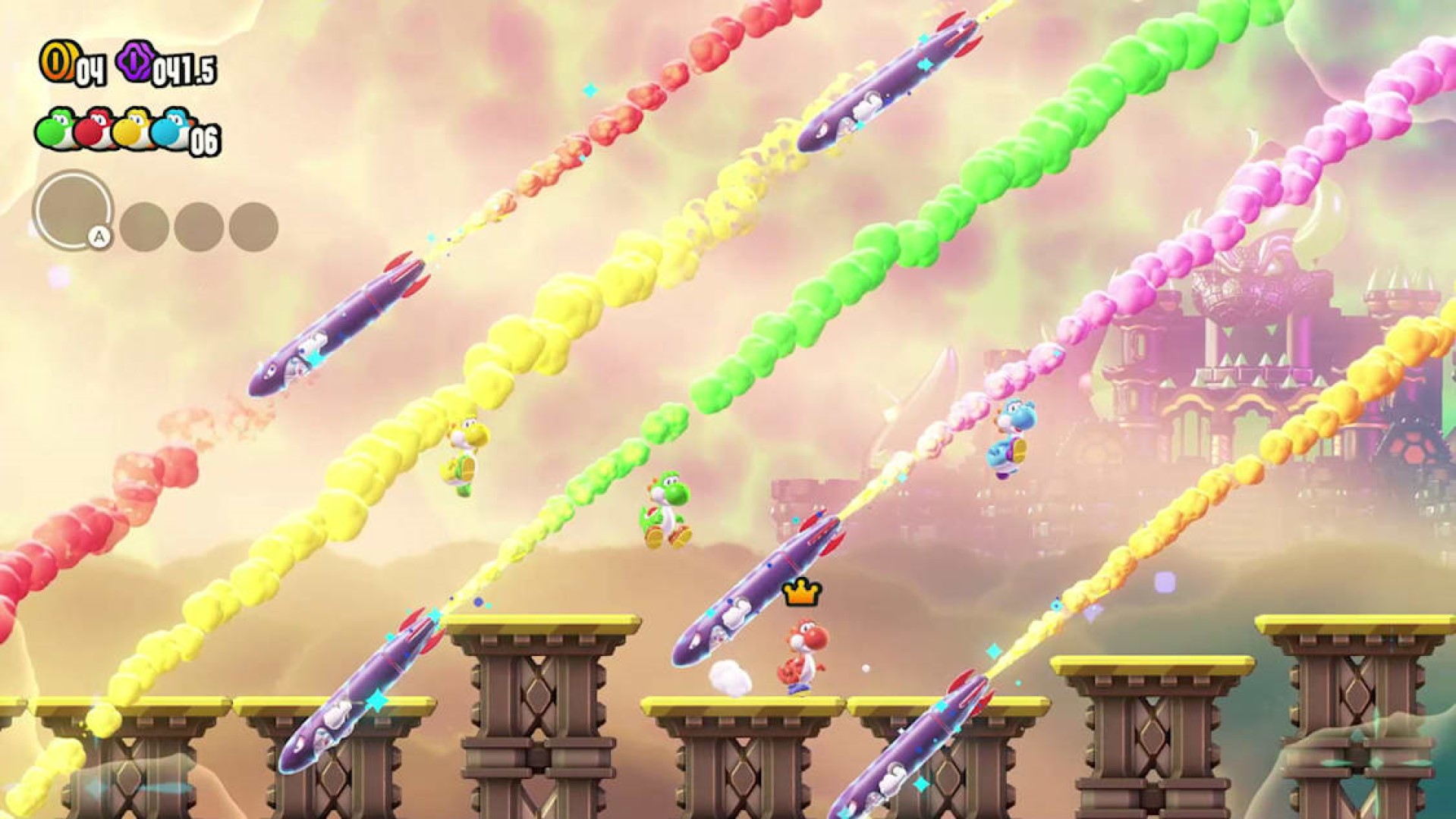
"The lack of a timer in Mario Wonder has a profound impact on how the stages are designed. These stages are dense, packed with secrets and things to discover in nearly every frame and pixel."
Right, badges! Another one of Super Mario Bros. Wonder’s big changes is how it handles its gigantic cast of playable characters. Wonder’s cast of 12 playable characters plays and controls identically – meaning character-specific abilities such as Luigi’s higher jump or Peach’s slow float are gone here, and every character controls the same, with the exception of Nabbit and Yoshi, who are invulnerable to damage and cannot take power ups (intended as “easy” characters for new players). Instead, those unique abilities are now tied to Badges. Depending on which badge you have equipped, you could get a better wall jump, get a flutter jump, or get better mobility in the water.
It would have been easy to stop there, but the developers go above and beyond with the Badges too, and there are all sorts of cool abilities tied to Badges, from ones that make things easier (you can always start with a Super Mushroom, or you can get a free rescue from a death once per level), to those that make things harder (you become invisible, not just to enemies, but also to yourself – have fun platforming!) to just ones that you can equip to better suit your play style. There are dozens of Badges, each of them bringing something unique to the table, and you can swap them at will. You can only ever have one of them on at a time – sadly no stacking Badge abilities to make OP or broken builds – but swapping them is easy and can be done at will except in the middle of a course, without penalty, and actively encouraged by the game.
Even without Badges, the game is a joy to play. The controls and physics are greatly improved over the slippery momentum that characterized the New Super Mario Bros. games, allowing for far more precise movement and platforming. Paired with the exceptionally strong level design, and the modifiers that the Badges and Wonder Seeds introduce, this is the sharpest playing 2D Mario game, well, arguably ever.
It’s also a 2D Mario game that makes a lot of concessions to modernity. The game saves after every level, foregoing the archaic and needlessly punishing save system of the past 2D titles, for example. Progression through the world is non linear, with you being given a whole bunch of courses available at a time, and being able to tackle them in any order you want (you can even choose not to do ones you are not interested in entirely). Levels are marked with a difficulty star rating on the world map, so you know upfront what you are in for.
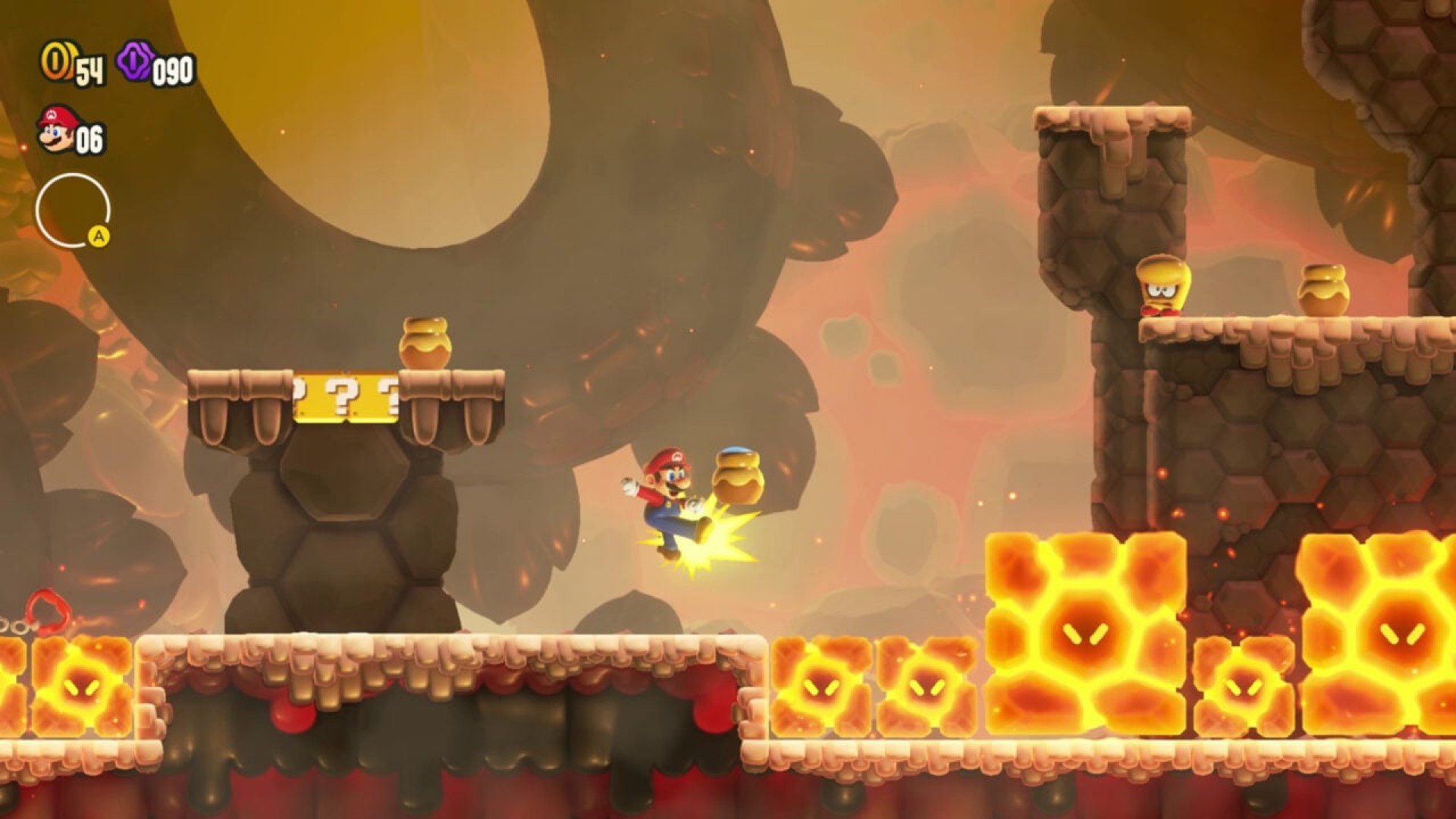
"The controls and physics are greatly improved over the slippery momentum that characterized the New Super Mario Bros. games, allowing for far more precise movement and platforming. Paired with the exceptionally strong level design, and the modifiers that the Badges and Wonder Seeds introduce, this is the sharpest playing 2D Mario game, well, arguably ever."
The world map itself is dense and packed with all sorts of secrets – the more you poke around, the more you find, from bonus rewards to hidden areas and levels to Badge challenges that you otherwise may never have found. And even with all this hidden bonus content, the game retains that sense of deranged inventiveness.
Of course, playing great and being inventive is a key part of the Mario identity, but there’s something else, something that was lost in the 2D games for far too long – the sense of visual whimsy and charm, and the bizarreness of the Mario universe, was lost in favor of the strict adherence to bland and sterile corporate mandated “brand standards” with the NSMB games. Everything just looked and felt very… safe and samey.
Then there is Mario Wonder, which is dripping with personality in every scene, with the game’s aesthetics, animations, enemy design, music, everything just reeks of so much personality. There are animations for everything – when Mario gets attacked by a Goomba, the Goomba bites Mario. When Mario is attacking multiple enemies in a line, you can see the last one panic and start to run in the opposite direction. When you’re going down a pipe, you can see Mario slowly wiggling his way in and out. Each new power up has its own unique animation. There is so much charm, so much personality, in everything. The amount of times I’ll go in and out of a pipe, or swap power ups over and over, just to see the animations, is a testament to how well done it all is.
And it makes an incredible difference. The game has an energy and vibrancy that the NSMB series simply never had. Everything in the game feels responsive to the players, and consideration has evidently been given to to everything that the player might do, exemplified by the fact that there are unique and bespoke animations for pretty much every action and interaction you can think of (and they are different for different characters!). And all of this is backed with a gorgeous, color saturated palette, rendered at a full 1080p (720p in handheld mode), running at a near constant blistering 60fps with no dips (except for some transitions on the world map). It looks and runs gorgeous, and is arguably one of the best-looking 2D Mario games of all time.
All of this – the variety, the insane amount of content, the attention to detail with animations or basic QoL that I’ve discussed – of course conveys an incredible amount of care, the kind you would expect from a AAA production that literally had no deadline imposed on it during development, and this is evident in other areas of Super Mario Bros. Wonder too. Take, for example, the online connectivity in this game.

"The online functionality in this game is thoughtfully implemented, and it’s a joy, perfectly in keeping with the spirit of the game and the vision its developers intended, without compromising the actual functionality available to the player."
Online is one area Nintendo has historically struggled with almost no exceptions. They either don’t implement online functionality in their games at all, or when they do, they… well they don’t do it too well. Super Mario Bros. Wonder is one of those rare exceptions. The online functionality in this game is thoughtfully implemented, and it’s a joy, perfectly in keeping with the spirit of the game and the vision its developers intended, without compromising the actual functionality available to the player.
Mario Wonder’s online can best be described as – I swear this is not a meme – Dark Souls. When you are playing online, you can see shadows of other players from around the world, and you can see exactly what they are doing and where they are doing it. This can be helpful not just to find secrets in the overworld, but it can also serve as a different purpose – if you die while playing, you get five seconds to try and fly over as a disembodied ghost to one of the other players you are playing with. If they touch you, you revive and respawn right then and there, and continue the level without losing a life or your progress. You can, in turn, rescue other players as well. You can also drop “standees” which are basically cardboard cutouts, pretty much anywhere on a level. These standees can revive other players in your stead. You can leave them right before a difficult jump, or right by a secret, to telegraph to other players where they should be going.
Playing online co-op with friends works the same way too. You can make a room for your friends to join, and then you all play your game independently. You can still see each other and bail each other out, but the game is no longer designed around all four of you playing together. It’s more about all four of you playing separately, together. It’s a great way to keep you connected with your friends without running into the net code issues you would run into with the Switch’s limited hardware and Nintendo’s lacking network functionality.
Local co-op has seen some changes too. Local multiplayer works far closer to the traditional multiplayer in 2D Mario you may remember, where all of you are playing and progressing through stages together. However, even here, there are some changes. Collision is simply not a thing in Wonder, meaning you don’t get to bump into other players, or pick them up and carry them and throw them into pits, or any of the other shenanigans that you got up to in New Super Mario Bros. games. There is one exception to this – if you are playing as Yoshi, other players can ride you, and you can ferry them around the level.

"Super Mario Bros. Wonder is a statement of intent. With Wonder, Nintendo shows us that 2D Mario is no longer content to stay in its 3D siblings’ shadow, and will instead be every bit the genre leading property that Mario should be."
On one hand, I do miss that unique multiplayer experience in Wonder, but on the other, being freed from having to design each course around the presence of up to four players and characters at the same time is precisely one of the reasons the levels in this game are able to be so much more, well, insane than those in any past 2D Mario title, so it’s a worthy tradeoff.
After two decades of New Super Mario Bros., the 2D Mario games were in desperate need of reinvention. The NSMB series was good, but it represented a safe, sterile take on the Mario universe that led to the 2D games being left behind not just by the overwhelmingly excellent and inventive 3D Mario titles, but other 2D platformers made by other developers too. Super Mario Bros. Wonder is a statement of intent. With Wonder, Nintendo shows us that 2D Mario is no longer content to stay in its 3D siblings’ shadow, and will instead be every bit the genre leading property that Mario should be. By re-injecting a healthy dose of whimsy and, yes, wonder back into proceedings, Super Mario Bros. Wonder makes the case for being one of the best 2D platformer games of all time, Mario or otherwise.
This game was reviewed on Nintendo Switch.
An incredible amount of inventiveness and variation in every level; excellent controls and level design; dripping with charm and whimsy with an overwhelming amount of personality-laden animations and aesthetic; the game almost never seems to repeat its tricks and gimmicks; surprisingly smartly implemented online functionality.
Some people may feel disappointed at the lack of collisions in co-op.










